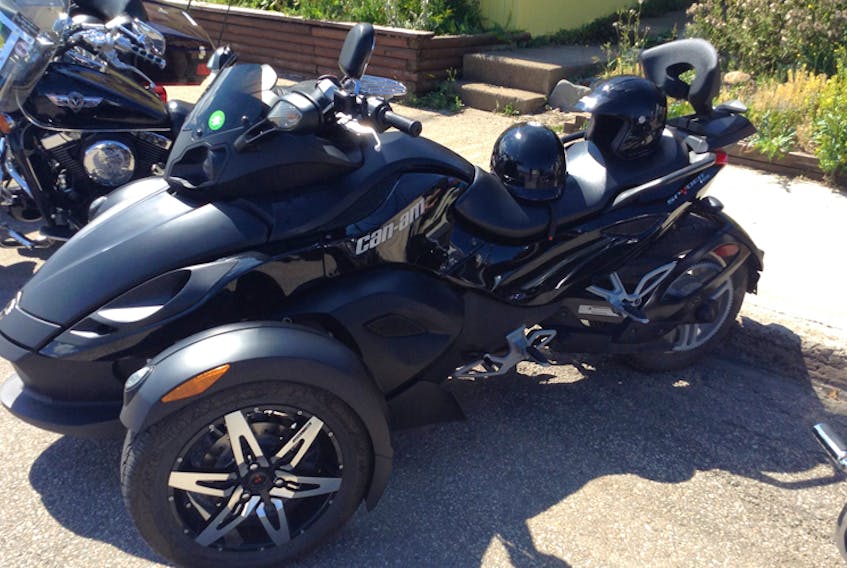Major motorcycle companies are a conservative lot in general. Some have tried to rock the boat with innovative designs and concepts, but rarely does the buying public accept these models. Surprisingly, the company that leads the way in attempting to change the consumers’ perception of a standard motorcycle is Honda. Ideas such as the DN-01, a twin cylinder motorcycle with a scooter-like drivetrain, and a cruiser-inspired riding position paired with an automatic transmission, never connected with the buying public. Undaunted, they tried again with the equally unique NM4. Similar in construction to the DN-01, but with an even more radical body shape, this failed to launch with consumers and has been dropped from the North American market.
One theme that was carried through these attempts was the use of the automatic transmission in their motorcycles. Motorcycle manufacturers have used standard manual transmissions in bikes for more than 100 years. There have been sporadic offerings with automatics over that period, but, again, with very limited success. However, Honda is not willing to give up on this idea. In their current lineup, they are offering a dual-clutch transmission, or DCT, on four different regular models. This isn’t your old scooter shifter; this is a thoroughly modern computer-assisted system that works seamlessly. I had a chance to drive one this summer, installed in a NC750X, and I can attest to the fact that after a brief introduction, this is a well-thought-out package that does everything a regular motorcycle is expected to do with less effort. Is this the wave of the future?
Honda isn’t the only one relying on automatic transmissions to keep bikers riding. Canada’s Bombardier Recreational Products (BRP), introduced the Can-Am Spyder in 2007 with this drive configuration as part of the package. This three-wheeled rig has the two steering wheels in front and the single drive wheel in back. It is controlled by conventional handlebars and the tandem seating position mimics the traditional motorcycle’s upright stance. Although slow to catch on with the hard core bikers, these rigs are gaining in popularity with other segments of the sport. Older riders find that this layout is easier to handle at slow speeds and frequent stops. Riders with developing or permanent physical disabilities have returned to motorcycling due to this design. Shorter riders from both genders appreciate the ability to ride along with their spouses onboard and not fear the dreaded tip over that can sometimes happen with two people riding a bike. Other manufacturers are looking at this marketing success and have plans to introduce their interpretations of the design soon.
The buzz word with the large automobile companies is ‘fully electric powered vehicles.’ Currently, we see hybrid cars from many manufacturers that still rely on some sort of gas or diesel-powered assistance to allow them to get greater range. Upstart car company Tesla has done away with the polluting internal combustion motor and use stand-alone electric motors to get the job done. Will this trend soon take over the motorcycle marketplace? There are already manufacturers out there producing and selling pure electric motorcycles. Zero is the name of the company that is the current leader in the production and sales of electric motorcycles on this side of the pond. These are not the inexpensive tiny scooters you see at non-traditional stores for less than $1,000. Zero-branded, street-legal motorcycles sell in a range from $10,000 to $24,000 each. These bikes still have the Achilles’ heel of all electric vehicles, and that is range anxiety. With promises of up to 200 kilometres before a recharge is required, the highway use practicality of these bikes are very limited. Normal bikes have a similar range, but only take a few minutes to fuel up as compared to a few hours for the electric bikes. Regular bikes will deliver an average range time after time, whereas electric bikes are compromised by temperature and terrain. Too many long hills and cooler, ambient temperatures, conspire to dramatically shorten the range of these bikes. Better batteries are on their way, however, with longer life cycles and deeper charge capabilities, the costly full battery replacements will likely increase. Many people believe such shortcomings are worth it due to the more eco-friendly initiatives portrayed with these units. In this province, that gain is offset by our use of fossil fuels to produce the bulk of electrical power in the grid. Still, these bikes are catching the eye of traditional brands. Even Harley-Davidson has announced plans to produce electric bikes in the near future; that would certainly make for quieter bike rallies, but where’s the fun in that?
So, is the future electric? Will standard shifts and clutches go the way of the carburetor and coils? Unless mandated or supplemented by government action, we probably won’t see a wholesale changeover to electric motorcycles anytime soon. The development of computer-assisted automatics is moving at a quicker pace and that could be the more efficient way things are going — for now. There are even self-balancing two-wheelers being tested by manufacturers. Regardless of the type of bike that is available to us, there is still lots of time left for riding right now. Get out there on your rig and don’t forget to wave.









